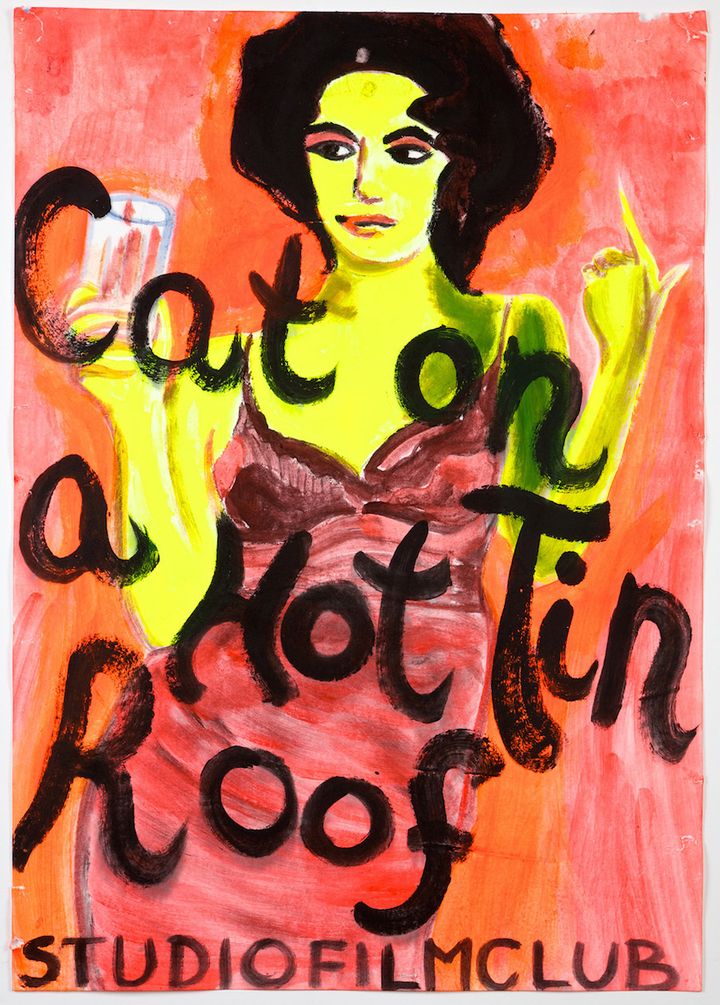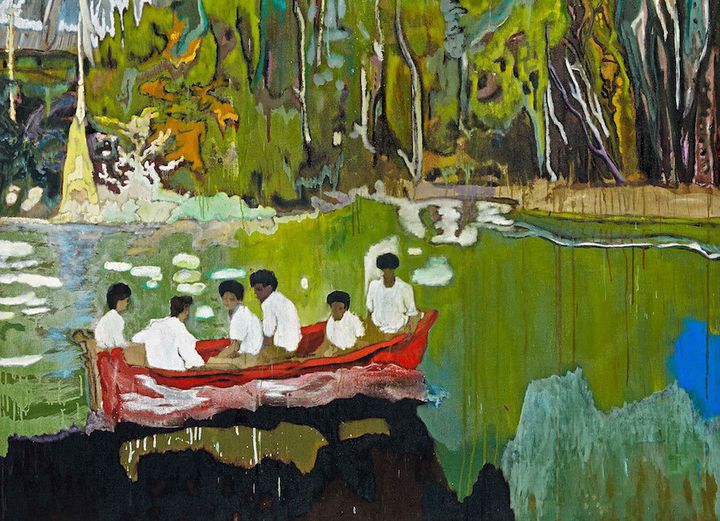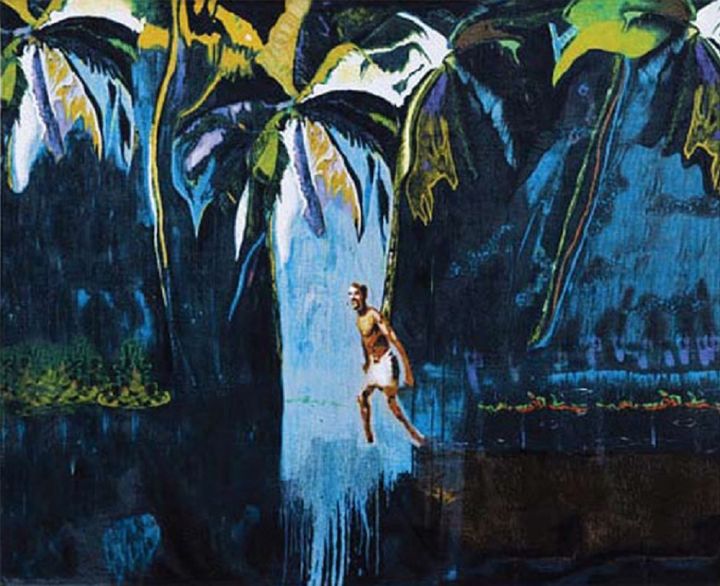
CAC Malaga has just inaugurated “Studiofilmclub”, an exhibition curated by its director, Fernando Francés, of the 166 movie posters artist Peter Doig made for his film club in Trinidad and Tobago, where he currently lives and works. The improvised cinema, in an old rum factory, was founded in 2003 together with the Trinidadian artist Che Lovelace to show movies to the public. The posters he created are free interpretations of those movies that broaden the formal knowledge of one of the most important artists of our time.
In the paintings of Peter Doig (Edinburgh, 1959), the artist’s memories and imagination are poured into representations of landscapes that evoke the footprints and feelings of the past. Empty modernist buildings engulfed by the overflowing, vital energy of nature, views covered by veils of snow or semitransparent curtains, a glimpse of figures, canoes floating on calm waters... Paintings that share an intensity and a dreamy, tranquil atmosphere. Peter Doig talks about his work on the occasion of his first exhibition in Spain:
What can you tell us about “Studio Film Club”?
In this exhibition I show most of the film posters I have painted for my film club in Port of Spain, Trinidad. For the most part they are hand painted and made very quickly, almost instinctively, so that I’m surprised with the results. I haven’t worked that way on my other paintings. The club still exists but the viewers no longer meet there every week as they did for a number of years. Every Thursday night they used to have a great time watching films on the big screen while drinking coconut water and the local beer.

Why, of all the arts, did you choose painting?
I chose painting because I like the freedom it offers, and especially because I like working on my own. I like being left to my own devices. I like the history of painting and I enjoy how its immense wealth and variety imposes limitations upon me. You have to make choices. So much has already been done... You were born in Edinburgh but moved temporarily to Trinidad, where you lived until you were 7. You then lived in Canada until you were 19 and later in London where you received your higher education. Finally, you returned to Trinidad in 2000. How do you think your nomadic lifestyle has affected your painting?
This lifestyle has greatly influenced my painting by opening me up to subjects that I wouldn’t have discovered otherwise. If I'd lived in one village, town, city of country it wouldn’t have been the same. Living in a place isn’t the same as visiting it, and I’ve been fortunate to live in a few places that really are quite different. They have all had a profound effect on the way I paint and on what I paint.
You are now living in Trinidad – what is it that appeals to you about the island?
Many things. The juxtaposition and proximity of a vibrant city and wilderness. The way the sounds of the city and the forest intermingle at times. The fact that Trinidadians have their own very evolved culture that they are immersed in. To me this is very important.

You’ve said that your paintings of Canada convey the feelings of your childhood, which at times you have described as boring. What was it like portraying this period of your life?
It came as a surprise to me when I made these paintings. It was not something I thought about or planned. When it happened it was very inspired and I went with it... it excited me. I suddenly felt it was not just a subject that was new and banally subversive (because it was so ordinary) but that what I was painting opened up new possibilities, new ways to paint and use paint.
Would you agree that your paintings are somewhat reminiscent of other artists, such as Gauguin, Monet or Munch?
I'm influenced by these 3 amongst many others, so the connections are apparent. But this can be said of almost any painter. All of us are influenced by the history of art.

You have shown an interest in moving increasingly towards abstract art. What is it that draws you there?
This seems to be the natural evolution of a painter. But I’m not sure that what’s happening in my work. Or at least not yet …
Why is it that the faces of the people you paint are not fully defined? When things are not made explicit it implies mystery. Is that intentional?
Mystery is not intentional. I want to try and paint a face (or painting) that can be looked at for a long time without getting bored, so that it still surprises me. If there is no element of surprise for me there will be none for the viewer either.

How have photography and cinema influenced your work?
I have always referred to photographs to make paintings and sometimes film stills as well. I think it would be hard, if not impossible, to avoid being influenced by these two mediums as they are so pervasive.
Hidden, veiled, mysterious. Do you think there is an erotic aspect to your painting?
It’s up to the viewer to feel these things and to respond to that. I wouldn’t want to say that there’s an erotic aspect to my painting. Even if I agreed with you. If it works, that’s great. But it's a feeling, it’s not something an artist can say about their work unless it's really up front and blatant

What did you try to convey to your students when you taught at the prestigious Düsseldorf Academy of Fine Arts?
I told them to take their time, that there’s no rush, they should allow their work to develop over time. We don't always have to know what our painting is about.
How do you feel about Robert Louis Stevenson’s statement 'There are no foreign lands. It is the traveller only who is foreign' being used as a title for a retrospective of your work?
It was not a retrospective but a show of works I had made since coming to Trinidad in 2000. It covered just over a decade of work. I agree with the statement even if it seems a little provocative. We have all felt foreign at some time or other; or in my case, all of the time no matter where I am. I accept this strangeness as it's all I know.

What do you think is the most dominant or persevering concept in your work?
I'm interested in focus. Drawing the viewer in and giving them something to look at, even if when they get close there may be less to see.
Where do you seek inspiration? I’m always looking for it, but I cannot say that I seek it. More often than not it comes by surprise, when I least expect it. Seeking things rarely brings results for me.
